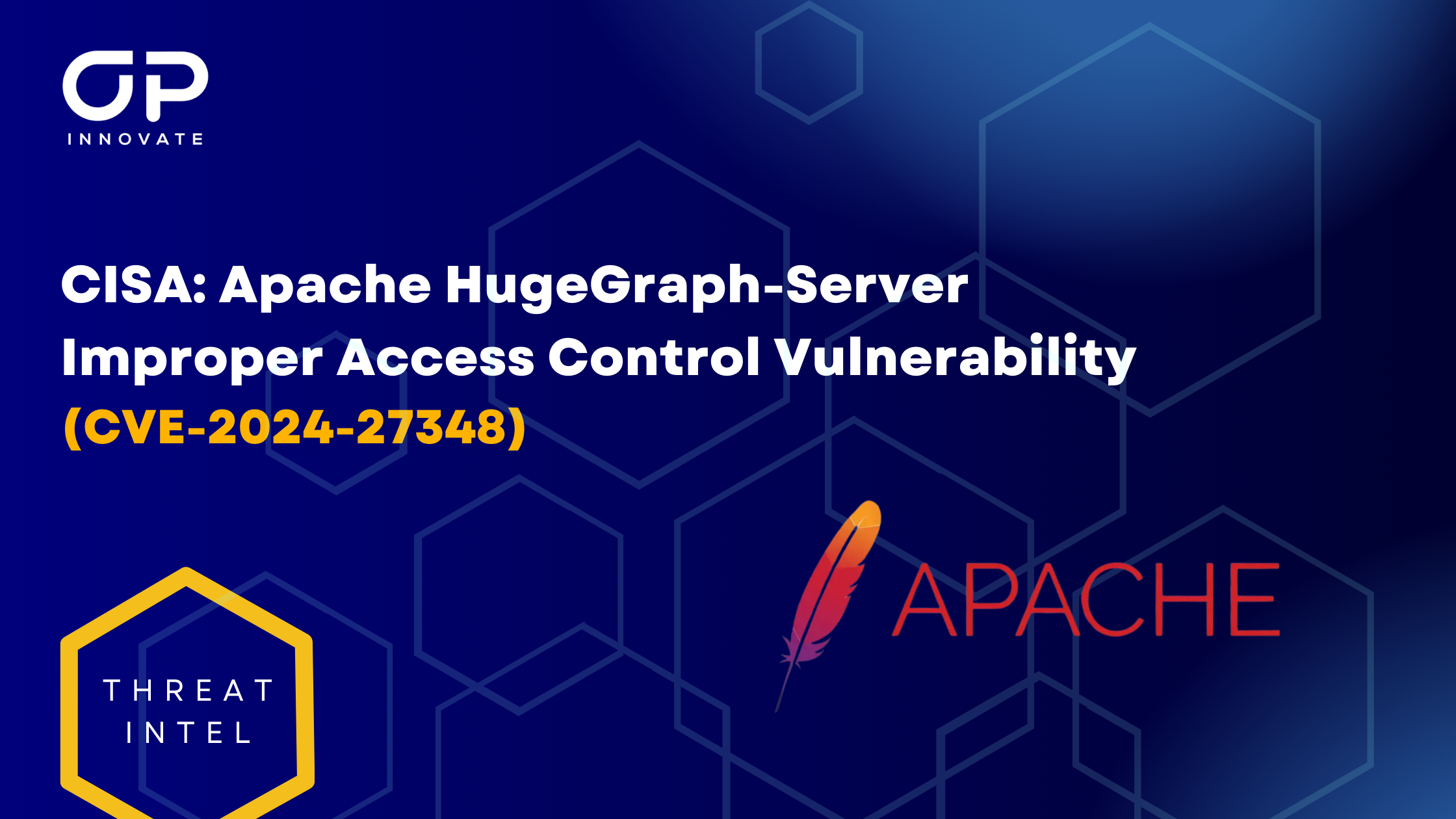CVE-2024-27348 is an Improper Access Control Vulnerability in Apache HugeGraph-Server, a widely used graph database system. This flaw is caused by insufficient access control mechanisms, allowing unauthorized users to gain access to sensitive data or perform actions beyond their intended permissions. Actively exploited in the wild, it poses a serious risk to organizations using HugeGraph-Server for managing graph-based data.
Attackers can bypass normal authentication processes and perform unauthorized operations on the graph database, including accessing, modifying, or deleting sensitive data, or performing administrative tasks without proper permissions. This compromises data integrity and exposes sensitive information, impacting the confidentiality, availability, and integrity of the system.
Vulnerability Details:
- CVE ID: CVE-2024-27348
- Affected Software: Apache HugeGraph-Server (versions prior to the latest patch)
- Type: Improper Access Control
- Attack Vector: Network
- Severity: High (CVSS Score: 8.5)
- Impact: Unauthorized Access, Data Manipulation, Potential System Compromise
Exploitation Evidence:
This vulnerability has been observed in active exploitation campaigns targeting organizations that utilize graph databases for various purposes, including social network analysis, fraud detection, and recommendation systems. Threat actors have been known to leverage this flaw to gain unauthorized access and manipulate sensitive datasets.
Impact Assessment:
The improper access control in Apache HugeGraph-Server could be exploited by attackers to gain unauthorized access to critical data, which may lead to significant business and operational risks. Potential impacts include:
- Unauthorized Data Access: Attackers can view sensitive or confidential data stored in the HugeGraph-Server.
- Data Manipulation: Malicious actors could alter graph data, leading to corrupt or inaccurate analytics, potentially affecting decision-making processes.
- Operational Disruption: If attackers modify database permissions or disrupt data integrity, it may lead to downtime or performance issues.
- System Compromise: Depending on how deeply the attacker can access the system, this could be a stepping stone for broader network exploitation.
Mitigation Recommendations:
- Patch Management:
- Update to the latest patched version of Apache HugeGraph-Server immediately. The patch addresses the improper access control by enforcing stricter authentication and authorization procedures.
- Access Control Policies:
- Implement least privilege access controls to restrict users’ ability to interact with sensitive parts of the database.
- Configure network-level access controls to limit exposure of the HugeGraph-Server to trusted users or systems only.
- Network Segmentation:
- Ensure that the HugeGraph-Server is hosted within segmented and isolated network zones, limiting access from untrusted networks or users.
- Monitoring and Detection:
- Deploy security monitoring solutions to detect and alert on abnormal activities or access attempts. Monitor HugeGraph-Server logs for any suspicious behavior such as unauthorized access attempts or modifications to data.
- Authentication Enhancements:
- Strengthen authentication mechanisms, including implementing multi-factor authentication (MFA) for users accessing the HugeGraph-Server.
- Audit and Review:
- Conduct regular audits of user access rights and permissions within the HugeGraph-Server to ensure there are no unintended access levels.
- Incident Response:
- Develop and test incident response plans in case of successful exploitation. This should include isolating the affected systems, analyzing the attack vector, and restoring the system from a secure state.
Improper access control vulnerabilities, such as CVE-2024-27348, are often exploited by both cybercriminals and state-sponsored threat actors. These types of vulnerabilities can be leveraged in targeted attacks to gain unauthorized access to sensitive data, disrupt critical operations, or escalate an attack deeper into an organization’s network. Since Apache HugeGraph-Server is used for data-intensive applications such as fraud detection, social network analysis, and knowledge graphs, the data it stores can be highly valuable, making this a prime target for exploitation.
Indicators of Compromise (IoCs):
- Unusual login attempts or access to HugeGraph-Server from unknown or untrusted IP addresses.
- Unexpected modifications to graph data or system configuration files.
- Sudden changes in user permissions or access rights.
- Unexplained system performance degradation or service interruptions.
CVE-2024-27348 presents a significant risk to organizations utilizing Apache HugeGraph-Server, especially those handling sensitive data or relying on the system for mission-critical analytics. The active exploitation of this vulnerability makes it essential for organizations to prioritize immediate patching and to implement stronger access control measures to prevent unauthorized access. Timely remediation and vigilance in monitoring are critical to reducing the potential for compromise and ensuring the security and integrity of graph-based data systems.



